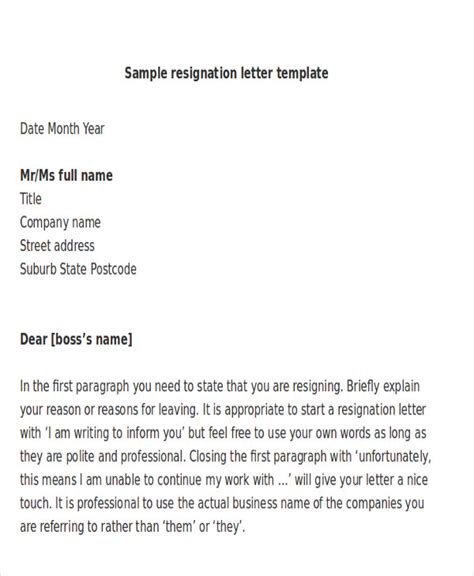Elements Of A Resignation Letter: A Comprehensive Guide

Resigning from a job can be a difficult decision, but when the time comes, it’s important to do it in a professional and respectful manner. Writing a resignation letter is an essential step that should not be overlooked. Here’s a comprehensive guide on the elements of a resignation letter to help you draft a letter that is clear, concise, and respectful.
Heading
Start your resignation letter with a clear and concise heading that includes the following:
- Your full name
- Your job title
- The name of the company or organization
- The date of the letter
Salutation
Begin the body of your letter with a formal salutation. Address your letter to your immediate supervisor or manager. Use “Dear” followed by their first and last name.
Opening Paragraph
The opening paragraph should be brief and to the point. State your intention to resign and include the date of your last day on the job.
Reason for Resignation
If you feel comfortable sharing the reason for your resignation, include it in the letter. Keep in mind that this is not required, and you should only disclose information that you are comfortable sharing. If you are leaving for a new job, you can mention it briefly.
Gratitude
Express your gratitude to the company or organization for the opportunities and experiences you gained while working there. Thank your supervisor or manager for their support and guidance during your tenure.
Offer to Help
If possible, offer to help with the transition process. You can mention that you are willing to train your replacement or help in any way you can during your remaining time at the company.
Closing Paragraph
In the closing paragraph, reiterate your intention to resign and thank your employer again for the opportunities and experiences you gained while working there. End the paragraph with a positive note.
Closing Salutation
End your letter with a formal closing salutation, such as “Sincerely” or “Best regards.” Sign your name below the closing salutation.
FAQs
1. What should I include in my resignation letter?
Your resignation letter should include the following:
- Your full name
- Your job title
- The name of the company or organization
- The date of the letter
- A formal salutation
- A brief opening paragraph stating your intention to resign and the date of your last day on the job
- The reason for your resignation (optional)
- A statement expressing gratitude for the opportunities and experiences gained while working at the company
- An offer to help with the transition process (optional)
- A positive closing paragraph
- A formal closing salutation
- Your signature
2. When should I submit my resignation letter?
You should submit your resignation letter at least two weeks before your planned last day on the job. This gives your employer enough time to make arrangements for your replacement and for a smooth transition process.
3. Should I discuss my reasons for resigning with my supervisor or manager before submitting my resignation letter?
It’s up to you whether or not you want to discuss your reasons for resigning with your supervisor or manager before submitting your resignation letter. Keep in mind that this conversation should be professional and respectful.
4. Should I offer to help with the transition process?
If possible, it’s a good idea to offer to help with the transition process. This shows that you are committed to ensuring a smooth transition for your employer and coworkers.
5. Can I submit my resignation letter via email?
Yes, you can submit your resignation letter via email. Make sure to follow the same format and guidelines as you would for a printed letter.
Remember, your resignation letter is an important document that should be written professionally and respectfully. Use this guide to help you draft a letter that expresses your gratitude and appreciation for the opportunities and experiences gained while working at your company or organization.
